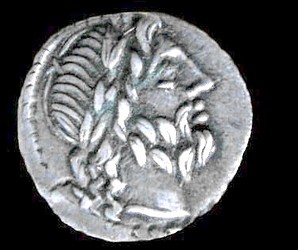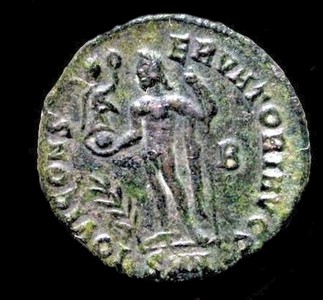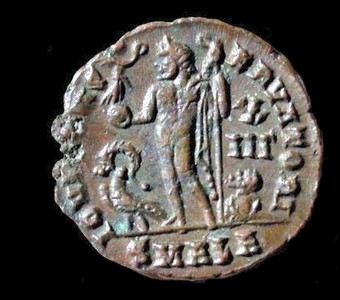 |
Jupiter The Latin sky-god Iuppiter was the god of light and all celestial phenomena, in particular rain and lightning. He was worshipped throughout Italy and over time, as a warrior-god, he also became the protector of Rome. A temple was consecrated for Iuppiter Optimus Maximus on the Capitoline (509 BC) where he reigned as the most powerful Roman deity, together with the Roman goddesses Juno and Minerva. Assimilation between the Greek god Zeus and Roman Iuppiter occurred early during the Republican era. On Roman coins he is usually depicted bearded; standing; seated on an ivory throne; with his attendant eagle; nude or semi-nude; holding a thunderbolt and sceptre, or sometimes a small figure of Victory. |


